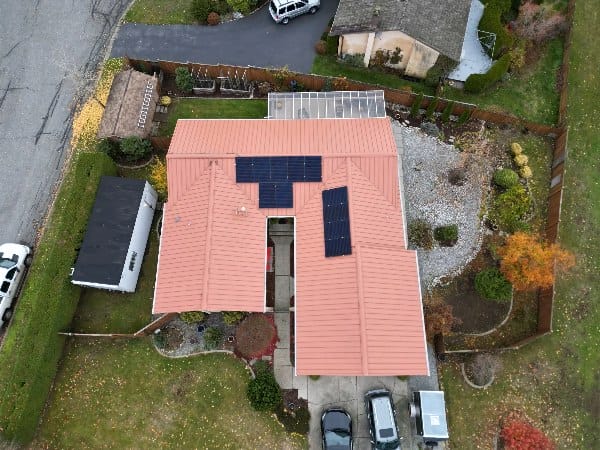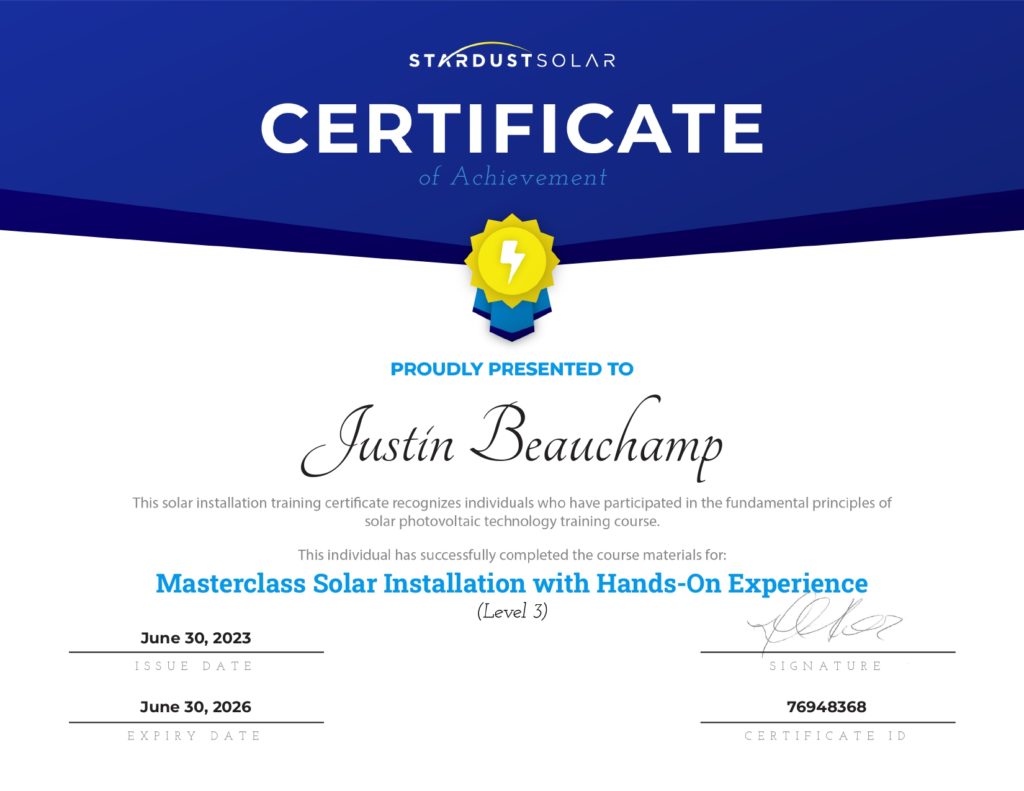Solar panels have become much cheaper because of better technology and more people wanting them. This makes solar power more affordable for many homes, which increases its popularity as a preferred energy source.
Adopting solar power gives better environmental sustainability, a more reliable energy supply, and increased economic growth. Are you planning to convert to sustainable energy? Read on to become familiar with the questions to ask when searching for a “solar electrician near me.”
What are the Benefits of Going Solar?
You can get many benefits when you decide to go solar, including:
- Sustainable buyers value solar panels, which boosts your home’s selling value.
- Its subsidies, tax credits, and rebates from many countries make the initial investment cheaper and save money.
- Lowers or eliminates your electricity expenses over time despite the high initial spending. Net metering lets you get credits for extra energy, offsetting costs.
- Reduces grid pressure during peak demand to boost grid stability and resilience.
- Reduces your dependence on utility providers and fossil fuel prices. This can stabilize and control energy costs.
- Doesn’t pollute or cause climate change like fossil fuels. Go solar to lower your carbon footprint and fight the effects of global warming.
What Types of Solar Panels to Consider?
Your budget, space available, energy needs, and design tastes are some aspects that should be considered while choosing the proper type of solar panels. Consider these solar panels from MAG Solar:
| Feature |
|
| ||
| Colour | Black | Black | ||
| Cell Count | 54 | 72 | ||
| Nominal Capacity | 410 Wp | 445 Wp | ||
| Technology | Low LID Mono PERC | Advanced HPDC | ||
| Module Efficiency | 20% | 22% | ||
| Resistance to Environmental Conditions | UV rays and intense temperatures | Extreme weather conditions | ||
| Temperature Efficiency | Operates efficiently at lower temperatures | Certified for high snow and wind loads | ||
What Do Solar Panels Need to Work on Your Home?
Roof Angle and Orientation
Solar panel installation requires an ideal roof angle. If you want maximum sunshine all day, your roof should face south, southeast, or southwest.
Shading
The effectiveness of solar panels can be diminished if they’re shaded on your roof by trees, buildings, or other nearby structures. Minimal shading maximizes solar energy generation.
Condition of the Roof
Solar panels are heavy, so make sure your roof is strong enough to hold them. Take care of any impending roof repairs or replacements before installing solar panels.
Local Laws and Authorizations
Contact your local government or HOA to determine what permissions and regulations are necessary to install solar panels.
Environmental Factors
Think about the local weather and climate. Solar panels may still produce electricity on cloudy days, although they work better in areas with plenty of sunlight.
Spaces Available
You should measure the roof area suitable for installing solar panels. The size and shape of the roof affect how many panels you can place.
What are the Popular Solar Panel Designs?
Here are five designs based on current technology and future potential:
1. Monocrystalline Solar Panels
High efficiency and sleek design, ideal for those who prioritize performance and aesthetics.
2. Polycrystalline Solar Panels
Less expensive and slightly less efficient than monocrystalline, with a blue appearance, good for balancing cost and efficiency.
3. Thin-Film Solar Panels
Flexible and lightweight, suitable for non-traditional surfaces but less efficient. They come in various materials.
4. Portable Solar Panels
These panels are easy to move and set up anywhere, which makes them ideal for camping, emergencies, or places without power lines.
5. Bifacial Solar Panels
Capture sunlight from both sides to increase energy generation, best for places where light can hit the panel from underneath.
What are the Common Solar Installation Issues Homeowners Encounter?
Here are some common issues:
| Issue | Details | Solution |
| Panel Shading | Shade from trees, buildings, and other barriers reduces performance. | Cut trees or additional barriers that create shadows on panels. Install micro-inverters or optimizers to reduce panel shading effects. |
| Faulty Inverter | Inverters convert solar panel DC electricity into home AC. Failure of inverters can cause system downtime. | Contact the manufacturer or installer. Upgrade to a more reliable or modern inverter. |
| Poor Performance | Dirt, module mismatch, and system age can affect performance. | Panel cleaning and system assessment. Upgrade to higher-efficiency panels or install additional ones. |
| Electrical System Upgrades | Older homes may need an electrical system upgrade to connect to a new solar panel system safely and effectively. | An electrical inspection can identify necessary upgrades. It ensures safety and system efficiency. |
| Aesthetic Concerns | Some homeowners are concerned about the visual impact of solar panels on their home’s appearance. | Options like BIPV (Building-Integrated Photovoltaics), which integrate solar technology into roofing materials or windows, can offer more aesthetically pleasing alternatives. |
| Weather Damage | Hurricanes and hailstorms can damage solar panels and other system components. | Choose panels designed for your region’s climate, and consider battery storage to maximize effectiveness. |
| Battery Issues | Battery storage in your solar system can cause capacity deterioration or software errors. | Update battery firmware or software. If battery performance degrades or fails, contact technical support. |
Are Solar Panels Worth It?
Solar panels are more popular in Canada now because they cost less, work better, and there are government perks for using them. Solar energy has grown a lot, from 221 MW in 2010 to 3,310 MW by the end of 2019. Experts think that by 2040, solar will make up 3% of Canada’s electricity.
Even though Canada is pretty far north and can get cold, it still gets plenty of sun—about 333 sunny days a year. This makes solar panels a good choice nationwide because they can still make electricity even when it’s cloudy and work better when it’s cool.
The price of putting in solar panels is dropping. It costs about $3.34 for every watt before tax breaks or rebates. Ontario has the cheapest costs, while Nunavut, Newfoundland, and Labrador are pricier.
The government also offers incentives to encourage more people to use solar power. For example, a new tax credit can cover 15% of the cost. This helps Canada compete with other countries and attracts more investment into clean energy.
How Long Will the Installation Take?
When you decide to install solar panels, the time it takes can vary. It depends on how big and complicated the system is, the rules for getting permits in your area, and the weather. Good solar companies can give you a rough idea of how long it will all take. But they might not be able to tell you the exact date they’ll connect your system right at the start.
- Initial Consultation: 1-2 Weeks
- Site Assessment and Energy Audit: 1 Week
- Design and Planning: 1-2 Weeks
- Procurement: 1-2 Weeks
- Installation: 2-3 Days
- Inspection and Commissioning: 1 Week
How Much Money Can I Save?
The money you save by using solar panels in Canada depends on how much the panels cost, how sunny your area is, and if you can get any government money back.
Costs
The price for solar panels changes depending on where you live in Canada. For example, in Ontario, it might cost you between $2.42 and $3.05 for every watt your solar system can produce.
Sunlight
The amount of power your panels can make in a year also changes by location. Some places get more sun, so they make more electricity.
Savings
If you use solar panels, you could reduce your electricity bill a lot by 90%. Over 30 years, this could save you a lot of money compared to buying electricity from the company.
Upfront Cost
When you buy and set up solar panels, there’s a big cost at the start. But, the price of solar panels has decreased, and they work better than before, which makes them a good deal over time.
Incentives
Some places in Canada give you money back for installing solar panels, like Alberta, where you can get rebates depending on your system’s size. Plus, a federal rebate can lower your costs too.

Make Informed Decisions With MAG Solar
Changing to solar power is a major move toward a greener and more sustainable future. We can lessen our environmental impact and dependence on limited fossil fuels by converting solar energy into usable power.
This change is major and will demand investment of time, energy, and resources. So, it is important to be well-informed and ask about solar installation.
No matter where you are in the process of solar panel installation, from initial inquiries to ongoing maintenance, MAG Solar is here to help. We guarantee a seamless transition and long-lasting convenience with our team and high-quality solar panels.

